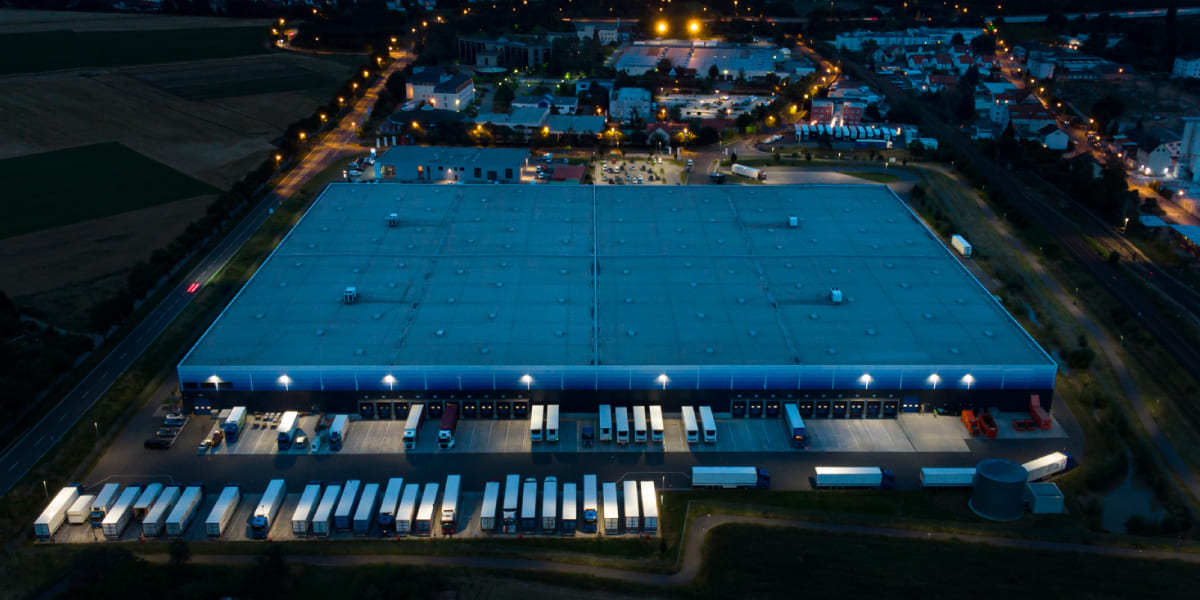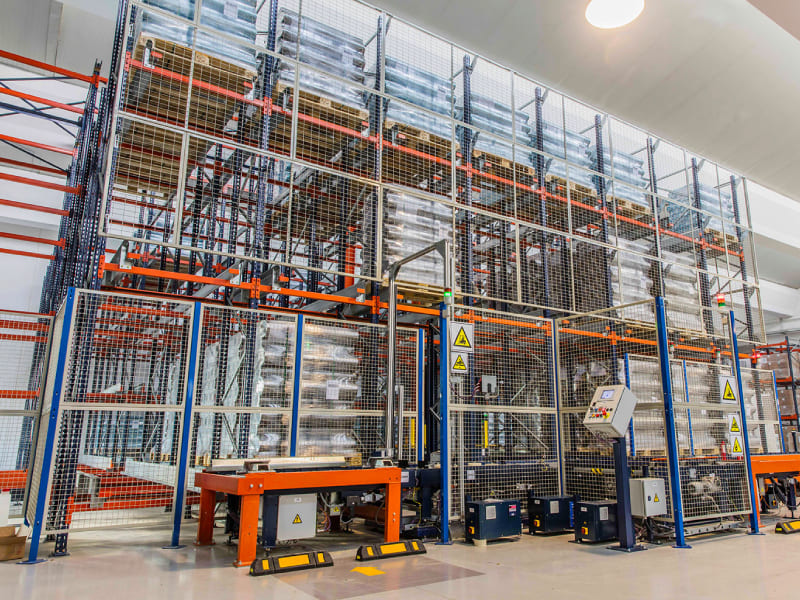To satisfy upsurging demands and fluctuating customer tastes, like Amazon Prime Day, and Black Friday, the supply chain has encountered unprecedented challenges in rotation rate, inventory management, and space utilization.
Under this circumstance, automated warehouses have been favored by an increasing amount of main players in commercial and industrial warehouses.
To survive, or optimally, win the competition, our vision and mindset should be upgraded as the logistics technologies evolve.
What is Automated Warehouse
An automated warehouse employs advanced technology to streamline storage and retrieval processes.
These systems reduce human intervention, leading to improved efficiency and accuracy. At their core, automated warehouses use sophisticated machinery and software to manage inventory from receipt to dispatch.

Types of Automated Storage Systems
Several automated storage systems cater to diverse warehousing needs:
- Utilize computer-controlled methods for automatically depositing and retrieving loads from defined storage locations
- Handle various load sizes, from small parts to full pallet loads
Use automated carts to move pallets within the racking structure
Excel in maximizing storage capacity in deep-lane pallet racking configurations
- Move in four directions: forward, backward, left, and right
- Allow for more complex storage arrangements and faster retrieval time
Key Components of Automated Warehouses
Effective automated warehouses rely on several crucial components:
Racking Systems
- ASRS Racking: Specially designed to interface with automated retrieval mechanisms
- Pallet Racking: Modified to accommodate automated systems while maintaining structural integrity
Automated Retrieval Mechanisms
- Cranes, robots, and conveyor systems work in tandem to move goods efficiently
- Programmed to optimize movement paths, reducing retrieval times
Control Systems and Software
- Warehouse Management Systems (WMS) oversee operations
- Advanced algorithms manage inventory placement and retrieval sequences
Benefits of Automated Warehouses
Implementing an automated warehouse solution offers numerous advantages:
Increased Space Utilization
- Vertical space exploitation reduces the overall footprint
- High-density storage configurations maximize available space
Improved Efficiency and Productivity
- Faster picking and putaway times
- 24/7 operation capability without fatigue
Enhanced Inventory Management
- Real-time tracking reduces errors and stock discrepancies
- Improved forecasting capabilities through data analytics

Considerations for Choosing an Automated Warehouse Solution
Selecting the right automated warehouse system requires careful evaluation of several factors:
1. Assess Current and Future Needs
- Inventory Volume: Analyze current inventory levels and projected growth
- Product Characteristics: Consider the size, weight, and handling requirements of your products
- Throughput Requirements: Evaluate your peak and average order volumes
2. Space Constraints and Layout
- Available Vertical Space: Determine maximum height for racking systems
- Floor Space: Assess available floor space and potential for expansion
- Existing Infrastructure: Consider integration with current building systems
3. Budget and ROI
- Initial Investment: Compare costs of different ASRS systems and manufacturers
- Operational Costs: Factor in energy consumption, maintenance, and staffing requirements
- Return on Investment: Calculate potential savings in labor, space, and efficiency improvements
4. Scalability and Flexibility
- Modular Systems: Consider solutions that allow for easy expansion
- Adaptability: Evaluate how well the system can accommodate changes in product mix or order profiles
5. Integration Capabilities
- Existing Systems: Ensure compatibility with current Warehouse Management Systems (WMS) or Enterprise Resource Planning (ERP) software
- Data Exchange: Assess the ease of integrating with other business systems for seamless data flow
6. Reliability and Support
- System Uptime: Investigate the reliability record of potential ASRS manufacturers
- Maintenance Requirements: Understand the frequency and complexity of required maintenance
- Support Services: Evaluate the availability and responsiveness of technical support
7. Implementation Timeline
- Installation Process: Consider the time required for system installation and testing
- Operational Disruption: Plan for potential disruptions to current operations during implementation
- Training Requirements: Factor in time and resources needed for staff training
8. Safety Considerations
- Compliance: Ensure the system meets all relevant safety standards and regulations
- Emergency Procedures: Evaluate built-in safety features and emergency shutdown protocols
Overcoming Adoption Challenges
While automated warehouses offer significant benefits, businesses may face hurdles during adoption:
Initial Investment Hurdles
- High upfront costs can be daunting
- Consider phased implementation to spread out investment
Staff Adaptation
- Existing staff may require extensive training on new systems
- Develop comprehensive change management strategies for smooth transitions
Maintenance and Support
- Regular maintenance is essential for system longevity
- Establish clear service level agreements with ASRS system providers
In summary, automated warehouses facilitate not merely raw material storage, but also loading and unloading, picking, and depositing.
its implementation depends on your expectation of circle efficiency and space utilization rate based on the cost concern compared to traditional warehousing.
if you would like to go for it, don't hesitate to contact us now, our team of experts is ready to advise you on the automated warehouse solution based on your company's specific needs and challenges at best.


 Network Supported
Network Supported